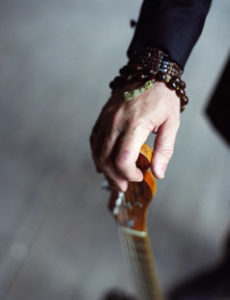May 2021
When Brian Stoltz picked up a guitar for the first time at age 9 or 10 and found the instrument’s old, rusty strings difficult to play, it didn’t derail his artistic ambitions.
The New Orleans guitar slinger kept strumming and learning, formed a late ‘60s garage band and then built a notable career playing with, among others, the Neville Brothers, Dr John, the Funky Meters and Bob Dylan. He also recorded three solo albums and plans to release a fourth this fall.
Stoltz’s first guitar was a Regal Parlor that someone had left at his uncle’s house, and he became inspired by a guitar-playing cousin and the Beatles.
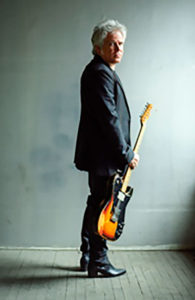 “My cousin Ray was a few years older than me and pretty good around a guitar, and I heard all the Beatles hits on the radio,” Stoltz recalls. “For the first year or so, I just banged on the guitar and couldn’t play anything. But then I learned that the old guy who lived across the street was a Dixieland and traditional jazz guitar player who performed nightly in a club on Bourbon Street. He invited me over and said he would show me some things.”
“My cousin Ray was a few years older than me and pretty good around a guitar, and I heard all the Beatles hits on the radio,” Stoltz recalls. “For the first year or so, I just banged on the guitar and couldn’t play anything. But then I learned that the old guy who lived across the street was a Dixieland and traditional jazz guitar player who performed nightly in a club on Bourbon Street. He invited me over and said he would show me some things.”
Many other guitarists have influenced Stoltz, including John Lennon, George Harrison, Jimi Hendrix and Jimmy Nolen.
“Seeing the Beatles on the Ed Sullivan Show in 1964 had a huge impact on me,” Stoltz says. “It was probably the best initiation a musician could have had at that time. That appearance not only changed the music scene but also inspired and set the stage for a whole new world of musicians.”
Stoltz was impressed with the way Lennon took an aggressive stance, playing with legs spread wide and singing with apparent total confidence.
“Lennon’s rhythm playing still holds up today as some of the strongest I have ever heard,” the New Orleans guitarist says. “He played with such precision, and I was drawn in by his sound. His jangly Rickenbacker, along with the incredible sounds coming from the other three Beatles, were the perfect vehicles to interpret those songs. Sure, they could have done it on Stratocasters and a Fender bass, but there is something special about the sounds they chose to use.”
Stoltz was equally moved by George Harrison. “He was more laid back and had great restraint in his playing,” Stoltz says. “His minimalist style was a great contrast to Lennon’s aggressiveness.”
And then the dynamic, flamboyant genius of Jimi Hendrix made a big impression.
“The ’60s and ’70s were such a creative time,” he recalls. “The Beatles had raised the bar for what could be done with pop songs. But then Jimi Hendrix came along and forged a whole new world of what could be done with the guitar.”
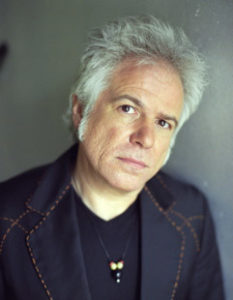 When Stoltz first heard Hendrix’s music, he had not yet listened to the old Delta or Chicago blues players.
When Stoltz first heard Hendrix’s music, he had not yet listened to the old Delta or Chicago blues players.
“So, when Jimi came along playing with such intensity and emotion, I was taken back,” he says. “I remember hearing ‘Purple Haze’ for the first time. Those opening licks just hit me so hard. I had never heard anything even close to that. I had such a visceral reaction to it that I remember being physically, psychologically and spiritually transported into a higher awareness. It was something beyond inspiration. It was an epiphany. It was something I have over the years grown to understand as a higher initiation — a lot like the way a true spiritual master transmits energy and gives higher initiations to students.”
 Stoltz, who was a member of the Neville Brothers Band 1981-1990 and played 25 years with the Funky Meters, gushes about Hendrix’s significance.
Stoltz, who was a member of the Neville Brothers Band 1981-1990 and played 25 years with the Funky Meters, gushes about Hendrix’s significance.
“Hendrix brought the electric guitar to the forefront, using every bit of what was at his disposal, even to the way he drove an amplifier,” Stoltz says. “Up until that point, an amplifier just made a guitar louder, but Jimi didn’t just use it for his guitar to be heard. Jimi played the amp, pushing it hard and making it an equal partner in his upfront, aggressive sound. Hendrix’s playing, singing and looks raised the bar for what could be done as a guitar player and a performer.”
Stoltz says he was moved most by Hendrix’s approach to melody and harmonic structure.
“I’m not a trained musician, so I can’t put into musical terms what he’s doing, but, if you listen to the way Jimi approaches songs like ‘Castles Made of Sand,’ you’ll hear — what I’m calling his harmonic structure — a completely new approach to electric pop guitar playing. I have come to realize just how much of his style he picked up from Curtis Mayfield. But Jimi brought it to a level where it was like Curtis Mayfield meets Thelonious Monk.”
Hendrix’s guitar exploits are well known, but few in the general public know Nolen, another major influence.
“In the ‘60s, New Orleans had WBOK, a great soul and R&B radio station,” Stoltz says. “It played all the great soul and Motown hits of the day and was where I first heard guitarist Jimmy Nolen playing on the James Brown hits. It wasn’t an earth-shaking experience like hearing the Beatles or Hendrix but, for me, was a completely new way of approaching the guitar.”
James Brown’s music makes the body “instantly move uncontrollably,” and one must dance, Stoltz says. His songs didn’t use many chords and put a spotlight on Nolen’s guitar playing.
“It allowed Jimmy Nolen to lock in like a machine whether he was groovin’ over one chord or playing some short, cool lick over and over,” Stoltz says. “Hearing those one-chord grooves puts you in a trance. I have always had a lot of respect for the player who could get his message across in the simplest ways — with a minimalist approach. Jimmy Nolen was that kind of player.”
Art Neville offered Stoltz a position in the Neville Brothers Band at a fortuitous time in September 1981. He played three shows with the Nevilles, and then the band was offered the opening spots for some shows on the Rolling Stones’ Tattoo You tour. Earlier that year, Keith Richards had told Rolling Stone magazine that the Nevilles’ Fiyo on the Bayou album was his current favorite.
“The Stones had a lot of respect for the Nevilles, and I grew to respect Mick Jagger for his hands-on approach,” Stoltz says. “Every show, Mick was there early watching every step of this huge production. He was always there for our soundchecks. He made sure that every aspect of the show was going to go down smoothly.”
In 1989, near the end of Stoltz’s years with the Nevilles, he met New York City singer-songwriter, keyboardist and producer Jon Carin. Carin was playing with Pink Floyd as second keyboardist to Richard Wright.
“Jon is a great player and an even better programmer,” Stoltz says. “He created all those great atmospheric sounds you hear on the Floyd records of that period and now performs with David Gilmour and Roger Waters. We began writing and recording together. We formed a partnership and landed a very lucrative record deal with RCA Records. That lasted until RCA decided to fire the president of the company and slash about 10 or 12 acts from their roster. Unfortunately, we were one of them, and, after losing the deal with RCA, we parted ways.”
A few years later, Stoltz was in Los Angeles recording with Cajun rocker Zachary Richard, and Dr. John also played on the session. Dr. John asked Stoltz if he could fill in on guitar for some concert dates, and it turned into more than a year on the road with the legendary New Orleans pianist and singer.
In early 1994, Stoltz was asked to join a recording session for Edie Brickell, with Paul Simon producing. Art Neville was also at the session.
“This was the first time seeing him since leaving the Neville Brothers Band in January 1990,” Stoltz recalls. “We rekindled our friendship and, shortly after, he offered me the position with the Funky Meters. I held that position for 25 years until Art passed away in July 2019. The Funky Meters were officially defunked.”
Stoltz also became a member of Porter Batiste Stoltz, a band formed when Neville was recovering from surgery in 2001. The band played and toured off and on through October 2009. George Porter Jr. was a bassist and founding member of the legendary New Orleans funk quartet the Meters and the later Funky Meters incarnation. Russell Batiste Jr. played drums for both groups and is now a member of Vida Blue, which features Phish keyboardist Page McConnell.
 Another gold chip in Stoltz’s resume is his work with Dylan. His guitar work is on about a dozen Dylan albums, including several best-of records. The main sessions he played on with Dylan were for the 1989 release Oh Mercy, and some outtakes and alternate versions were released on Tell Tale Signs.
Another gold chip in Stoltz’s resume is his work with Dylan. His guitar work is on about a dozen Dylan albums, including several best-of records. The main sessions he played on with Dylan were for the 1989 release Oh Mercy, and some outtakes and alternate versions were released on Tell Tale Signs.
“I don’t remember the names of all the songs I performed on, because I remember playing on things that remain unreleased,” Stoltz says. ”I do remember playing on ‘Political World,’ ‘Shooting Star,’ ‘Disease of Conceit’, ‘Everything Is Broken,’ ‘Born in Time,’ ‘Dignity’ and ‘God Knows.’”
The recording sessions with Dylan were very different than those with other artists in New Orleans.
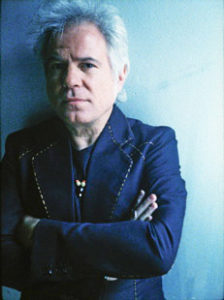 “The sessions with Bob were very focused,” he says. “All business. I liked this. There was no time for chitchat, small talk or back-slappin’. When Bob walked into the studio each night, it was obvious that he already had that night’s work on his mind. He usually came in, poured a cup of coffee and started working on the lyrics to what was being cut that night.
“The sessions with Bob were very focused,” he says. “All business. I liked this. There was no time for chitchat, small talk or back-slappin’. When Bob walked into the studio each night, it was obvious that he already had that night’s work on his mind. He usually came in, poured a cup of coffee and started working on the lyrics to what was being cut that night.
“It was an inspiration to watch him work and re-work the lyrics,” Stoltz continues. “Some of the songs seemed to have 20 verses or so. Bob would whittle them down to five or six and then focus in on those, getting them to perfection. It made me realize how much work I had ahead of me if I wanted to consider myself a real songwriter. I’ve been around and worked with a lot of different songwriters, but Bob truly separated the men from the boys. Until then, I considered it a success just to be able to complete five or six verses. Watching Bob work the lyrics until he found just the right language to convey his intent was a real inspiration for me.”
For the Oh Mercy sessions, the musicians were set up in a half circle with the drums in the middle. Stoltz was seated next to Dylan on his left.
“On the floor in between our chairs, Bob had a pile of lyric sheets,” Stoltz recalls. “Whenever he got up to pour coffee or take a break, I bent over and strained to try and see the additional lyrics on the pages. It was a little dark in the room, so it was hard for me to read them. But I saw enough to know that most writers would kill to have what Bob threw away.”
Dylan’s 1979 release, Slow Train Coming, which Stoltz did not play on, is on Stoltz’s best album list.
“Toward the end of the ‘70s, music was growing stale for me,” he explains. “A lot of people, especially musicians, were listening to fusion and a lot of what I thought was fake jazz. It was all so boring. Then Dylan turned that around with Slow Train Coming, and, musically, I was saved. I remember Bob taking a lot of flak from his older fans. They accused him of abandoning them and couldn’t believe he became a Christian. I thought it was a beautiful album, and I remember thinking that Bob had penned the greatest batch of gospel songs ever written.”
 Stoltz’s No. 1 album of all time, though, is Chris Squire’s 1975 album Fish Out of Water. Besides Stoltz regarding it as a great album, Fish Out of Water grabs the top spot, because the Beatles have so many great albums that it’s difficult to pick a favorite, he says.
Stoltz’s No. 1 album of all time, though, is Chris Squire’s 1975 album Fish Out of Water. Besides Stoltz regarding it as a great album, Fish Out of Water grabs the top spot, because the Beatles have so many great albums that it’s difficult to pick a favorite, he says.
“Along with the Yes album Close to the Edge, Fish Out of Water is perfect from the first note to the last,” Stoltz says. “There isn’t a second of throw-away music. It’s an orchestrated recording and highly emotional. The interplay between Squire and drummer Bill Bruford is second to none, and the melodies are gorgeous. Squire was a rare performer who, like Hendrix and Johnny Winter, had it all — a great bass player, vocalist, songwriter and performer.”
The songs on the album are mostly in odd time signatures, but the songs “are so solid and smooth that it was years before I even realized it,” Stoltz says. “What’s ironic about this being my favorite record is that there’s no guitar on the album — only a slight bit of acoustic that isn’t noticeable.”
Stoltz says he has always believed that instruments are there to serve the music. He’s never been big on music that is created around an instrument.
“You might say, ‘Yeah, but you’re into Jimi Hendrix, Johnny Winter and Muddy Waters,’” Stoltz says. “But the thing about all my favorite guitar players is that they are a complete package. They are great songwriters, great vocalists and great performers. Had Chris Squire only been a bass player, he would not have made an album like Fish Out of Water. It would have been something else and probably not at the top of my list.”
The first album Stoltz owned was Meet the Beatles.
“I have a career because of this album,” he says. “I was 8 or 9 years old when it came out, and I can remember telling people, ‘That’s what I’m going to do.’”
What about favorite albums that reflect Stoltz’s Big Easy roots?
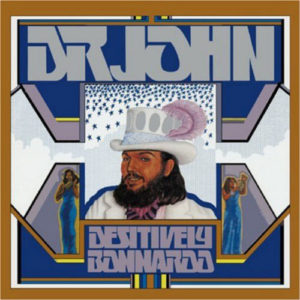 “Of all the great albums by Dr. John, Desitively Bonnaroo is my favorite,” he says. “Dr. John has a great batch of tunes with Allen Toussaint producing and the Meters as the house band. And, with horn man Gary Brown on sax, how can you go wrong? This is one of the funkiest albums to ever come out of New Orleans.”
“Of all the great albums by Dr. John, Desitively Bonnaroo is my favorite,” he says. “Dr. John has a great batch of tunes with Allen Toussaint producing and the Meters as the house band. And, with horn man Gary Brown on sax, how can you go wrong? This is one of the funkiest albums to ever come out of New Orleans.”
